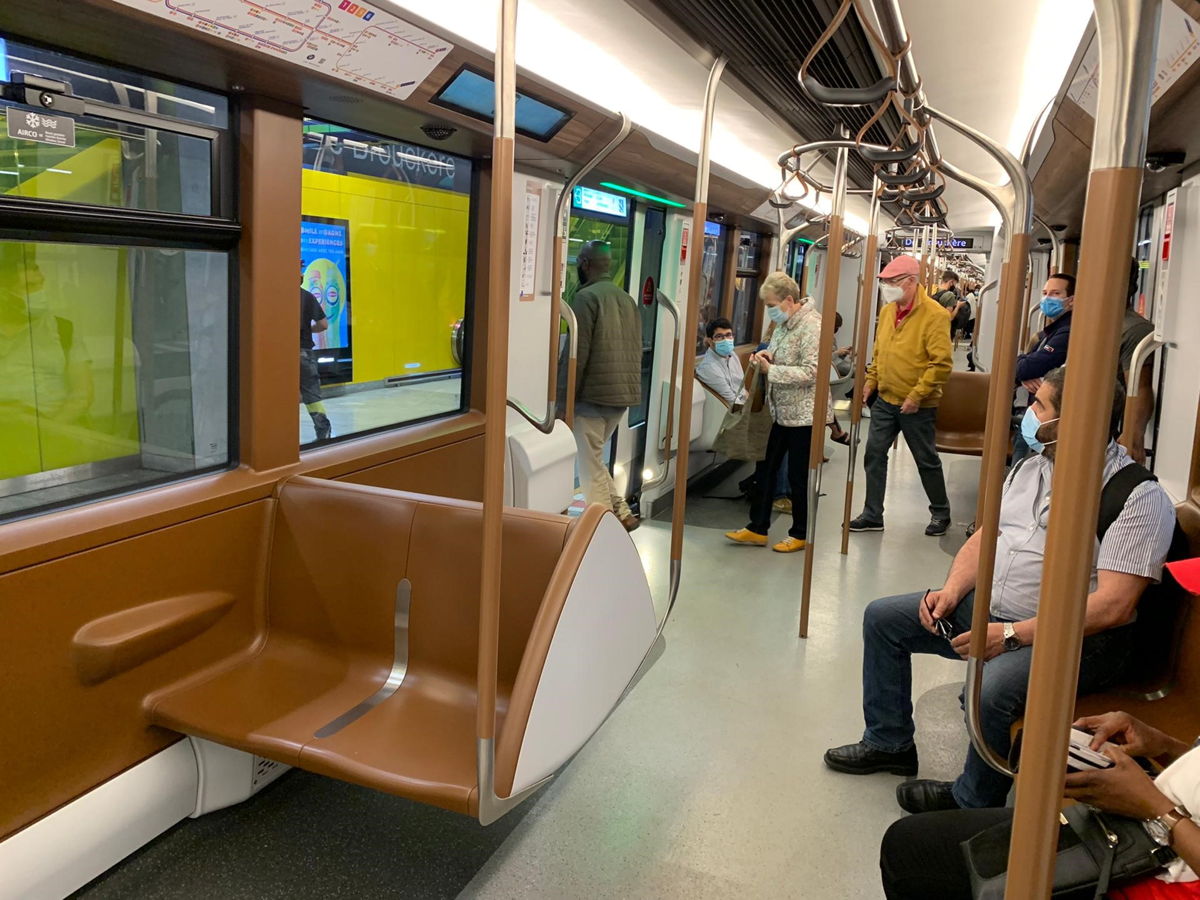After several months of test rides, Brussels public transport operator STIB launched its new M7 metro on Thursday, which will make the network more accessible for people with a disability.
The new vehicles, which will initially operate between the Gare de l'Ouest and Stockel, have been adapted to make entering and leaving the vehicle easier for people with a disability, specifically for wheelchair users and deaf people.
"The floor of the metro is on the same level as the platform, and the doors are even wider than those of the previous generation," said An Van Hamme, spokesperson for STIB.
"There are also multifunctional seats in the vehicle (for wheelchair users as well as prams), which are indicated on the outside, whilst LED lighting above the doors have been added to visually indicate the closing of doors alongside the audible signal," she added.
All doors on the M7 metro cars open and close automatically, meaning passengers will no longer have to push a button.
Four additional new metros will be added to line 1 throughout the course of this month, and as of September, the new M7 metro trains will be officially included in the timetable of line 1. A total of 43 new metro cars were ordered.

Inside the new M7 metro. Credit: STIB
From November onwards, all services running on lines 1 and 5 will be M7 metro cars, which means the older orange MX metro trains will be removed from those lines to be used on lines 2 and 6 to increase the number of available seats, especially during rush hours.
Once all metro cars become operational, the rush hour interval between services on lines 2 and 6 will be reduced by half a minute to one metro every 2.5 minutes, and from 2.5 minutes to 2 minutes on lines 1 and 5.
In the long term, the capacity of the metro network will increase by 8,000 places per hour and per direction thanks to the arrival of the new vehicles, according to a STIB press release.
In the longer term, the new metro trains will also be used on metro line 3 connecting Albert to Bordet, which is currently being created.

